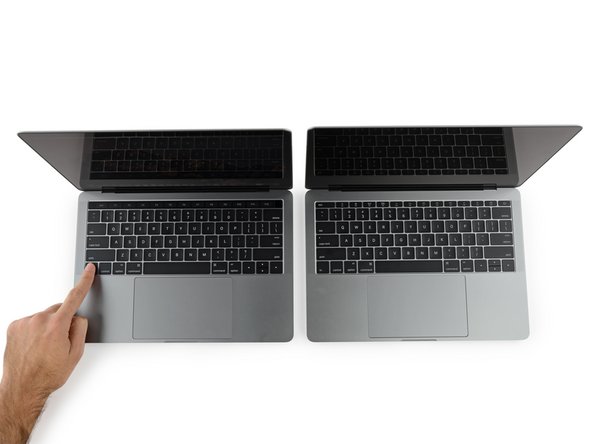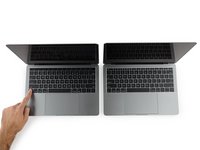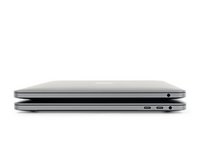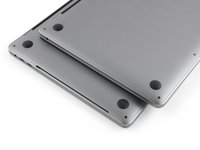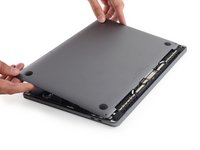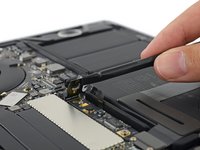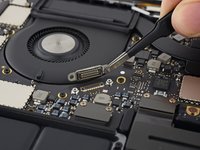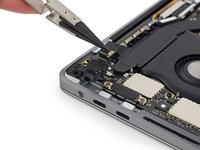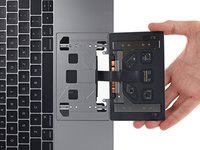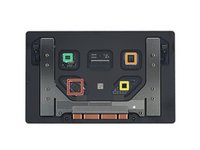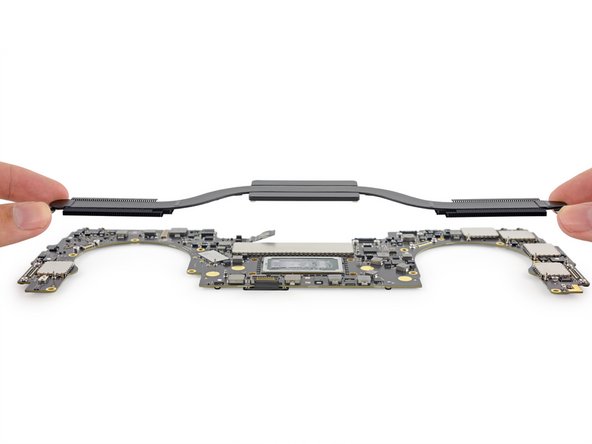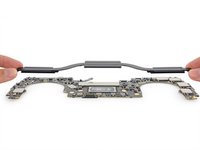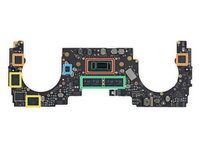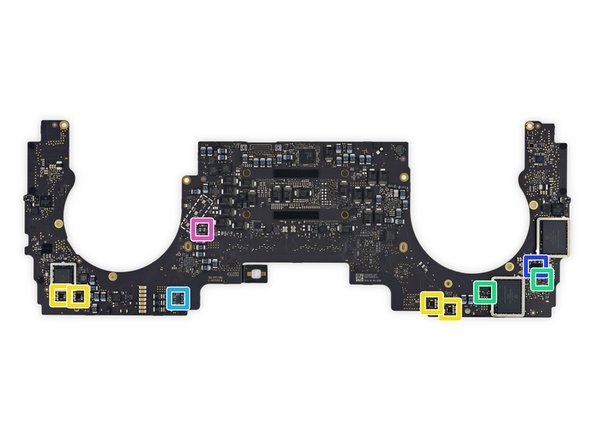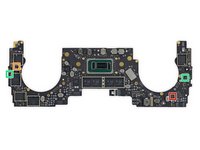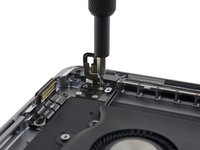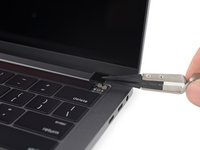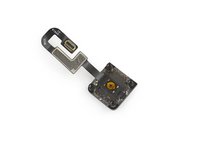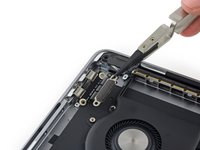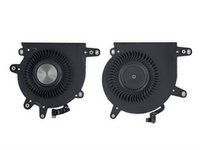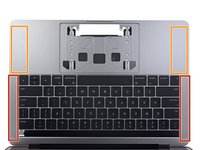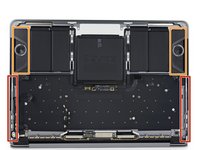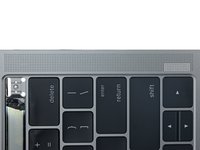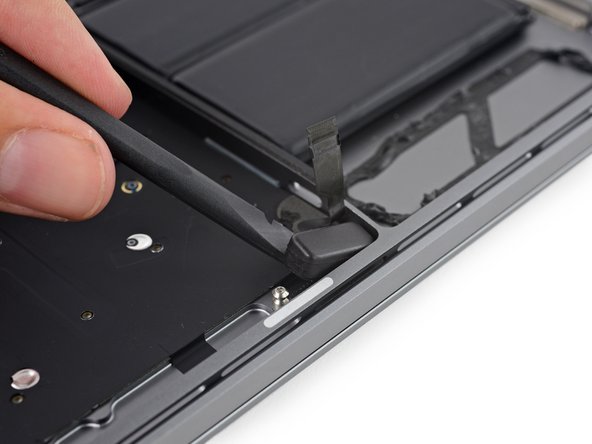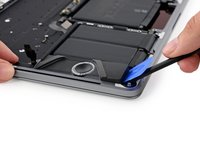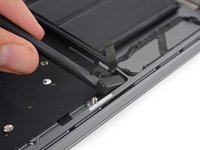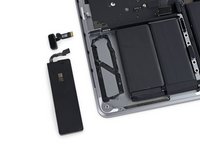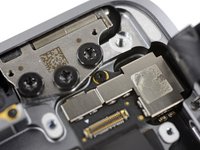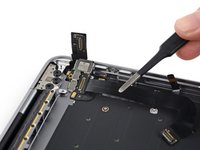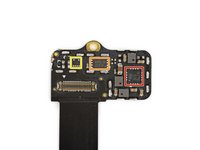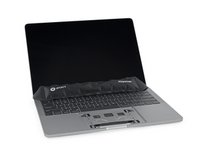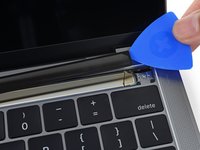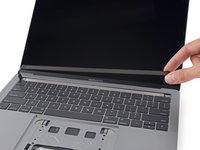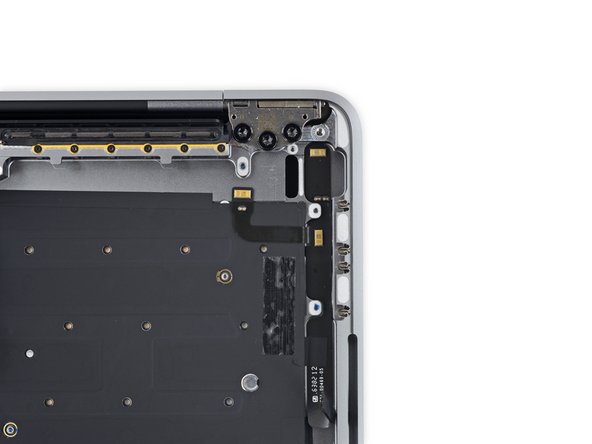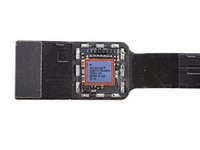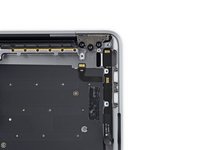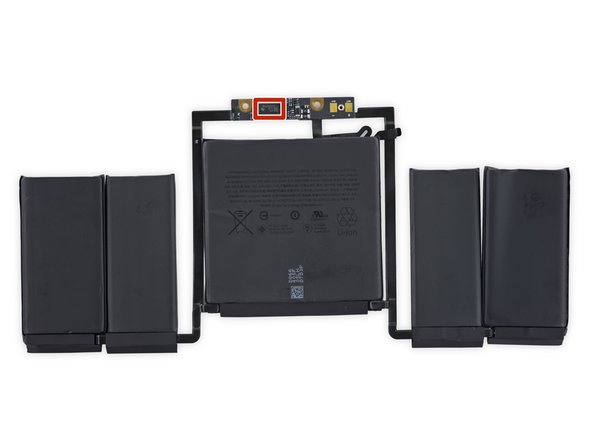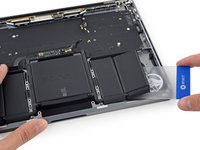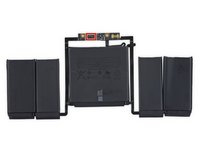Introduction
Two weeks ago, we tore down the new entry-level 13" MacBook Pro to discover it was thinner, lighter, faster, and (sad face) less repairable than most any other pro-level laptop. Today, we turn our tools on its Touch Bar-equipped launch mate. Will this machine surprise us with some upgrade-friendly features, or will it be as disposable as the box it comes in? There's only one way to find out: it's teardown time!
Follow along on Facebook, Instagram, or Twitter to keep in touch with the latest and greatest hardware teardowns and repair news!
What you need
Video Overview
-
-
Today's million-dollar question: Is this a scaled-up version of the 13-inch "Escape Edition," or a scaled-down version of the 15-inch Touch Bar unit? Here's what the tech specs tell us:
-
13.3” LED-backlit IPS Retina display with 2560 × 1600 resolution (227 dpi), P3 color gamut
-
2.9 GHz Skylake dual-core Intel Core i5 (Turbo Boost up to 3.3 GHz) with integrated Intel Iris Graphics 550
-
8 GB of 2133 MHz LPDDR3 onboard memory (16 GB configuration available)
-
256 GB, 512 GB, or 1 TB PCIe-based SSD
-
Four Thunderbolt 3 (USB-C) ports supporting charging, DisplayPort, Thunderbolt, USB 3.1 Gen 2
-
Touch Bar with integrated Touch ID sensor
-
Force Touch trackpad
-
-
-
A rudimentary inspection of the outer case reveals the expected FCC certifications, and a new model number: A1706.
-
We're itching to grab our screwdrivers and get to work—but first, let's whip out the other Late 2016 13" Retina MacBook Pro for some quick comparisons ...
-
-
-
According to Apple, this MacBook Pro's dimensions match exactly with those of the "Escape Edition" machine we tore down a couple weeks ago. Do we believe it even for a second? Yes we do.
-
Do you miss your function keys? Hold down the Function key to see your missing function keys. Chameleon Mode, engage.
-
One thing that is noticeably different is, of course, the port situation on the starboard side. This Touch Bar-equipped machine packs two extra Thunderbolt ports, so you have twice as many places to plug in your dongles.
-
Finally, we note a pair of side vents on the underside of the Touch Bar version, similar to the ones we've spotted in previous Retina MacBook Pros—but absent from the Function Key model.
-
-
-
Blasting through the pentalobe-and-suction-cup-dance normally reserved for iPhones, we beast the lid off with a familiar sliding maneuver.
-
Let's play "Spot the Differences!" On the left we have the Touch Bar MBP, and on the right is the Escape Edition MBP.
-
On the Touch Bar model, it looks like we can only remove the trackpad and headphone jack before hitting a logic board barrier.
-
-
-
It appears 2016 is the year of the new connector, as this is the second time we've seen the new approach to the battery bridge.
-
These copper pads are for the positive and negative terminals of the battery.
-
Apple also seems to have included a connector that goes ... nowhere?
-
Could it be a diagnostic port? Circuits and firmware do need testing—although we have seen a fair amount of test points, which usually cut it.
-
We also find the modular headphone jack this time without microphone hangers-on. Here we thought these were a thing of the past.
-
-
-
Much like the Function Keys model, the trackpad in the Touch Bar unit slides out easily after dispatching ten T5 Torx screws.
-
We can also happily report that the trackpads from these respective models are identical, and likely cross-compatible.
-
In case you missed it, here are the ICs we identified the first time around:
-
STMicroelectronics STM32F103VB ARM Cortex-M3 MCU
-
Broadcom BCM5976C1KUFBG Touch Controller
-
Maxim Integrated MAX11291ENX 24-Bit, 6-Channel Delta-Sigma ADC
-
Monolithic Power Systems MP24830 white LED driver
-
-
-
Touchpad IC identification, continued:
-
Bosch Sensortec BMA282 accelerometer
-
Texas Instruments TMP421 remote/local temperature sensor
-
Macronix MX25L2006EZUI-12G 2 Mb serial NOR flash memory
-
Maxim Integrated MAX9028 comparator
-
-
-
We're ready to remove the rest of the peripherals. It'd be great to get a look at the battery, fans, heat sink, and speakers. Except we can't.
-
The symmetrical logic board keeps guard over the remaining components, so we spudger off its connecting cables and wrest it free from the case.
-
The heat sink is attached to the logic board with screws on the bottom. With the board out of the case, we're able to remove the heat sink for inspection—with a heat pipe running in each direction, it's got twice the pipe of the entry-level model.
-
-
-
-
We now look at the
moustachelogic board to see what chips make this MacBook a Pro: -
Intel Core i5-6267U processor with Intel Iris Graphics 550
-
Intel JHL6540 Thunderbolt 3 controller
-
SanDisk SDRQKBDC4 064G 64 GB NAND flash memory (x2 for a total of 128 GB)
-
Samsung K4E6E304EB-EGCE DDR3 DRAM (4 x 2 GB for 8 GB total)
-
Texas Instruments SN650839 66AL7XWGI, and TI/Stellaris LM4FS1EH SMC Controller (Replacement codename for TM4EA231)
-
Murata/Apple 339S00056 Wi-Fi Module
-
Likely Apple SSD controller underneath (also likely) Micron R4432ACPE-GD-F 512 Mb memory, probably similar to this one.
-
-
-
Flipping the logic board over, we find no shortage of components, including:
-
SanDisk SDRQKBDC4 64 GB NAND flash storage (as seen in the Escape Edition's removable SSD)—bringing the total to 256 GB
-
APL1023/343S00137 (likely the custom Apple T1 chip that pairs with the Touch Bar)
-
2x Texas Instruments CD3215C00 USB type-C controller (and 2 on the back)
-
Intersil ISL95828HRTZ Intel CPU PWM controller
-
Apple 338S00193-A1 power management
-
Winbond W25Q64FVZPIQ 64 Mb serial flash memory
-
NXP 66V10 NFC controller, containing Secure Element 008 and NXP PN549 (as seen in the iPhone 6s)
-
-
-
More chips on the flip:
-
2x Pericom PI3WVR12612 HDMI 2.0, DisplayPort 1.2 Video Switch
-
Cirrus Logic CS42L83A Audio Codec
-
National Semiconductor LP8548B1 backlight driver
-
Texas Instruments TPS51916 memory power synchronous buck controller, and TPS51980A synchronous buck controller
-
Texas Instruments TMP513A remote/local temperature sensor
-
2x Fairchild Semiconductor FDMC7570S 40 A N-channel MOSFET
-
Fairchild Semiconductor FDMC86106LZ PMIC 7.5 A N-channel MOSFET
-
-
-
IC identification, pt. 2:
-
Vishay SIC635 power stage
-
Vishay SIC535 power stage
-
Analog Devices SSM3515B 31 W Class D audio amplifier
-
Texas Instruments TMP102 temperature sensor
-
Renesas (formerly Intersil) ISL9239 battery charger
-
Apple power management (assumption)
-
Texas Instruments INA214 current sense amplifier
-
-
-
IC identification, pt. 3:
-
Macronix MX25U3235F 32 Mb serial NOR flash memory
-
Winbond W25Q80DVUXIE 8 Mb serial NOR flash memory
-
Macronix MX25L2006EZUI-12G 2 Mb serial NOR flash memory
-
Texas Instruments TPS3895 adjustable voltage supervisor
-
Diodes Incorporated PI3USB102E 480 Mbps USB 2.0 switch
-
Texas Instruments SN74LVC1G02 single NOR gate
-
Likely hall sensor
-
-
-
Another new feature of the MacBook Pro with Touch Bar is the addition of Touch ID.
-
The hardware helping drive this nifty feature contains a button coupled with capacitive sensors that can distinguish fingers. Yay for biometrics.
-
The Touch ID button is topped by sapphire crystal, which should protect the fingerprint scanner from scratches.
-
-
-
Gently nestled between MacBook's edge and the keyboard are two speaker grilles—carefully crafted vents that channel sound waves out of the MacBook Pro straight to ... Wait.
-
The speakers are not located under the speaker grilles. The speaker grille doesn't even go clear through the case.
-
These speakers likely blast their impressive sound through the side air vents.
-
-
-
Met with resistance from heavy adhesive, we employ a combination of an opening pick and a spudger to pry the right speaker off the upper case.
-
We spy with our little eyes what might be a teeny speaker, wedged in the corner above the "true" speaker.
-
We loved the cute rubber-bumper sound-isolating screws holding down the speakers in the Function Keys MBP. Looks like the Touch Bar opted to use extra gooey glue instead.
-
-
Tool used on this step:Mako Driver Kit - 64 Precision Bits$39.95
-
We're so close to the Touch Bar we can almost, well, touch it.
-
Apple seems to be staking its claim on the cool tech, by slapping a P2 pentalobe screw over the Touch Bar entry point.
-
We pluck an interconnect cable from the lower enclosure—this links the logic board to the Touch Bar display and likely hosts some display silicon. We find:
-
STMicroelectronics STOD32A AMOLED power management
-
Winbond W25Q40EWUXIE 4 Mb serial NOR flash memory
-
Semtech RClamp3324T 4-line ESD protection
-
-
Tool used on this step:iOpener$14.99
-
Things are about to get heated. We call upon our friend the iOpener to assist us in removing the Touch Bar.
-
Kids, gather 'round! Today we'll learn how to accidentally break the Touch Bar. Our efforts to separate the OLED panel from the upper case resulted in the digitizer separating from the display. You live and you learn.
-
Adding insult to injury, the Touch Bar flex cable is routed underneath the upper case, making removal just a tad bit more annoying than we expected.
-
-
-
Human touch needs to be processed by a brain. Touch Bar needs to be processed by a chip. With some surgery we find the Touch Bar brain:
-
Broadcom BCM5976TC1KUB60G touch controller
-
Removing the OLED strip is difficult enough, but our efforts will not be in vain! Maybe a little in vain. Okay, our efforts were crushed (along with our hopes and dreams). The Touch Bar is fragile.
-
To add to the fragile mystery that is the Touch Bar, we stumble across an unmarked chip. Given the location, it is likely a display driver of sorts.
-
After scraping out all that business we uncover a three-microphone array. What is the leftmost one even listening to? The fan? The keyboard? Who knows!
-
-
-
At last we carve out the (mightily adhered) 5-cell battery.
-
You'd better hope your "Pro" career is short; this battery replacement is a doozy.
-
The battery board hosts a TI BQ20Z451 (a possible variant of the BQ20Z45-R1 line, seen in MacBook Pros forever)
-
Listing a 49.2 Wh capacity, this battery seems a little piddly compared to the Function Key edition's 54.5 Wh—especially considering it's driving a lot more functionality (pun intended).
-
Dotting our i's, we slap these batteries on a scale: the Function Key-equipped MacBook Pro battery weighed in at 235 grams, while this battery weighs just 197 grams.
-
- The trackpad can be removed without first removing the battery.
- Proprietary pentalobe screws continue to make working on the device unnecessarily difficult.
- The battery assembly is entirely, and very solidly, glued into the case, thus complicating replacement.
- The processor, RAM, and flash memory are soldered to the logic board.
- The Touch Bar adds a second, difficult to replace, screen to damage.
- The Touch ID sensor doubles as the power switch, and is paired with the T1 chip on the logic board. Fixing a broken power switch may require help from Apple, or a new logic board.
Final Thoughts
Repairability Score


(10 is easiest to repair)
77 Guide Comments
what a mess inside. especially given the spaces around the batteries, and the off position of speakers, looks like the chassis was optimised for the non-touchbar version (much cleaner layout, removable SSD, no gaps), and touchbar addition was a later decision. Maybe initially they envisaged only the 15" would have touchbar.
a similar case of "odd unused chassis space" happened with the first gen 13" retina macbook pro, which had empty space under the trackpad. Was probably a late decision to use small form SSD over 2.5" SSD. this empty space was used up on subsequent updates.
to me the touchbar version has way too many compromises. the biggest issues are: smaller battery, while using a processor with a higher TDP. and non upgradable SSD (arguably the only component that might require future upgrade, unless you want to pay extraordinary money right now).
How do you do a power rest if the machine hangs? Before you held down the power button for a few seconds. Would that work with a touch ID button?
It still is a physical button. Just like the iPhones (except iPhone 7).
mamufek -
I would assume that you still do - the Touch ID sensor is still a physical button, so there's no reason it doesn't work like a normal button as before. However, to stop it shutting down the machine with a single click, I'd imagine macOS has some code in it saying "if the power button is pushed while the computer is on, it's probably for Touch ID things, so don't shut down".
in fact you have to press it long to act like a power button says the apple support page :P








